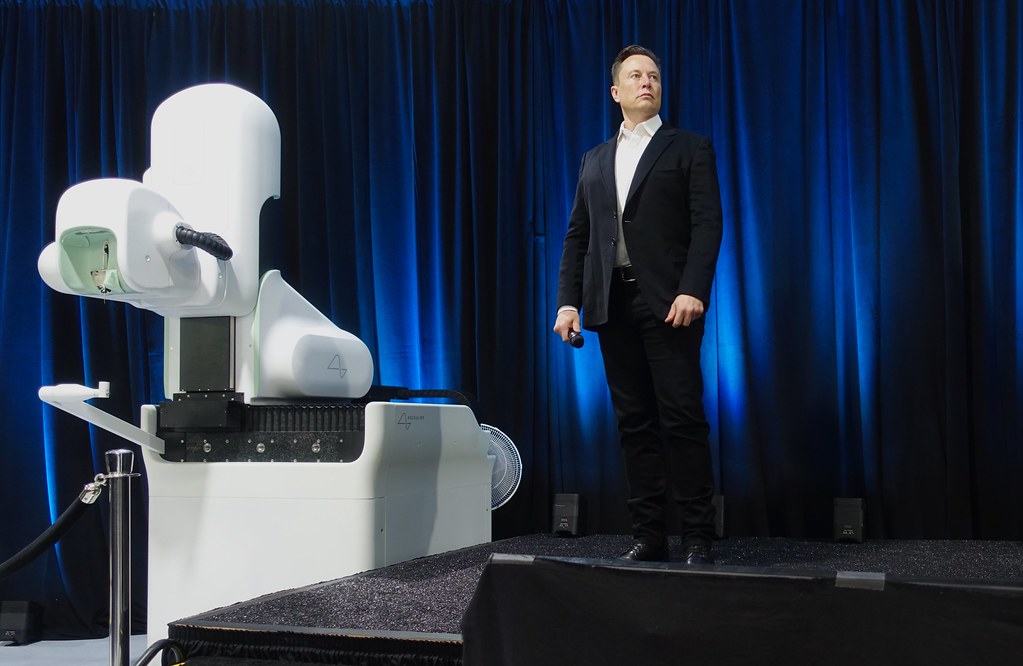
Neuralink, has successfully implanted its first brain-computer interface (BCI) chip in a human being. This pivotal development comes after the U.S. Food and Drug Administration (FDA) granted Neuralink, co-founded by Musk in 2016, permission to conduct human trials in 2023. The move signals a monumental step forward in the quest to merge human cognition with digital technology, aiming to restore autonomy to individuals with severe medical conditions and unlock human potential at new levels.
A Leap Towards Restoring Autonomy
Elon Musk, the visionary behind Neuralink, took to X (formerly known as Twitter) to share the news of this pioneering procedure, which was performed on a Sunday. The recipient, a human being embarking on an unprecedented journey with Neuralink, is reported to be recovering well. Musk’s announcement highlights the initial promising results, showcasing the implant’s capability to detect neuron spikes effectively. Neuron spikes, which are essentially the language of nerve cells, play a crucial role in transmitting messages throughout the body, enabling various tasks and functions.
Neuralink’s mission, since its inception in 2016 by Musk and a team of seven scientists and engineers, has been to develop a “generalized brain interface.” This ambitious goal aims not only to restore autonomy for patients with severe medical conditions but also to unlock human potential on a broader scale. The company’s first human trial, announced in September following FDA approval, is a significant step towards realizing this vision. The trial focuses on individuals with quadriplegia due to cervical spinal cord injuries or amyotrophic lateral sclerosis (ALS), offering a glimpse of hope for restoring their ability to interact with the world around them.
The technology at the heart of Neuralink’s innovative approach involves a robot named R1, tasked with surgically inserting the implants into participants’ brains. These implants, designed to be “cosmetically invisible,” promise a new level of interaction between humans and computers or mobile devices, enabling control through thought alone. The precision of the R1 robot, equipped to insert the implants’ fine threads accurately, is a testament to the advanced engineering driving this initiative.
How Does It Work?
The U.S. Food and Drug Administration (FDA) has granted Neuralink and its competitors permission to test their implantable brain-computer interfaces (BCIs) on humans, focusing primarily on motor functions. This technology enables users to control devices simply by thinking. Andreas Forsland, CEO of Cognixion, emphasizes the current limitations of these implants. “The FDA is constraining these implants to the top of the head, which is the most easily reproducible area of the brain,” Forsland explains, urging caution against overhyping the technology’s immediate capabilities.
Challenges and Risks
This development is not without its challenges and controversies. Neuralink has faced scrutiny over alleged violations of the Animal Welfare Act and concerns regarding its compliance with U.S. Department of Transportation rules on the movement of hazardous materials. Despite these hurdles, the company’s progress in human trials represents a pivotal moment in the integration of technology with human physiology. Moreover, the potential for misuse of such technology cannot be ignored. The risk of hackers gaining access to one’s most private thoughts and controls is a concerning prospect, reminiscent of the vulnerabilities found in internet-connected devices today.
Despite the challenges and risks, the promise of technology to enhance the lives of people with disabilities is undeniable. Gina Kline, founder of Enable Ventures, highlights the era we are entering—one where technology can significantly uplift the independence, self-determination, and economic participation of individuals with disabilities. Personal stories, like those involving cochlear implants within families, illustrate the profound impact these technologies can have on communication and connection. However, they also reveal the financial burdens associated with maintaining such life-changing devices, often not fully covered by insurance.
Transforming Lives and Unlocking Potential
Neuralink’s brain-computer interface, dubbed Telepathy, holds the promise of transforming the lives of individuals with paralysis. By allowing control of a computer cursor or keyboard through thought alone, the technology could offer unprecedented independence and communication capabilities. The impact of such an innovation could be life-altering, potentially enabling individuals like the late Stephen Hawking to communicate at speeds rivaling that of a speed typist, said Musk on X.
The insertion of the Neuralink chip involves a surgical robot meticulously placing the implant and its connected threads, equipped with electrodes to record neural activity, into the brain. This procedure, while complex, underscores the company’s commitment to advancing medical technology in a way that could redefine the boundaries of human-machine interaction.
Beyond Mobility: A Vision for the Future
Neuralink’s ambitions extend far beyond facilitating basic communication and control for individuals with paralysis. The company envisions a future where its technology can restore full mobility and sight, significantly enhancing the quality of life for those affected by debilitating conditions. This vision of a “Fitbit in your skull with tiny wires that go to your brain,” as Musk once described, represents a bold leap towards integrating technology with the human body in ways previously imagined only in science fiction.
As Neuralink continues to navigate the complex landscape of medical innovation, ethical considerations, and regulatory compliance, its efforts to pioneer a new frontier in neuroscience and technology remain a beacon of potential for the future. The successful implantation of its device in a human subject not only marks a historic moment but also lays the groundwork for a future where the limitations imposed by physical conditions can be overcome through the power of technology.
Related News:
Featured Image courtesy of Steve Jurvetson/Flickr
